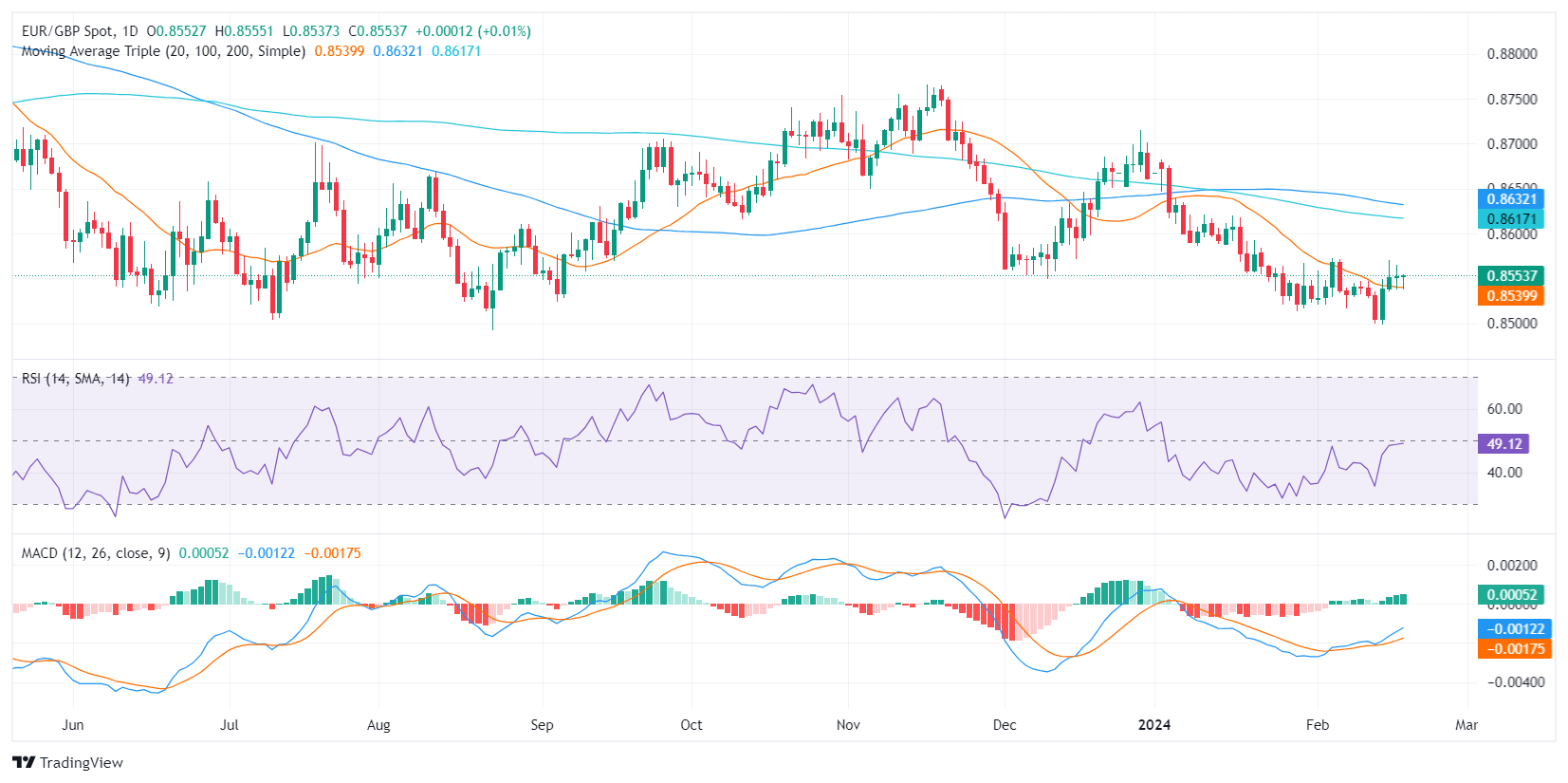EUR/GBP gains momentum on quiet Monday, bulls step in

- The EUR/GBP stands at 0.8555 in Monday’s session, jumping above the 20-day SMA.
- Sticky European inflation may push the ECB to a more aggressive stance toward the easing cycle.
- The week’s highlight will be the British and the EU’s Manufacturing PMIs from February.
- As long as markets bet on the BoE starting its easing later than the ECB the upside may be limited.
In Monday’s session, the EUR/GBP was at 0.8555 amid anticipation of possible shifts in European Central Bank (ECB) policy, as recent indicators point towards revitalized wage growth and a surprising uptick in core inflation. However, markets are still betting on a sooner easing-cycle start than the Bank of England (BoE) which gives the Pound an advantage over the euro.
In the Euro area, the inflation trend reversed partially in January when core inflation was above expectations at 3.3%, indicative of a strengthening Eurozone economy. There is speculation that resilient wage growth, as suggested by the ECB’s wage tracker, may contribute to stickier inflation which may push the bank to hold rates for longer. In that sense, if the European economies show strengths as the British economy, the Euro could partially strengthen. However, markets are still betting between 125-100 bps of easing from the ECB in 2024, vs the sub-100 bps of cutting from the BoE which could limit the upside. Incoming data will set the timing of the easing, and this week, markets will get key Manufacturing PMI readings from both economic blocks from February which could ignite volatility in the pair.
EUR/GBP technical analysis
Examining the Relative Strength Index (RSI), the EUR/GBP pair hints at a slightly positive outlook as the index hovers around the central mark, indicating restrained buying momentum. Recent transitions further validate this tilt, with the RSI shifting from deep negative to the 50 mark, indicating a possible shift in buyer power. However, the shifting trend is not markedly aggressive, suggesting a scope for volatility.
On the other hand, the Moving Average Convergence Divergence (MACD) histogram, a measure to evaluate momentum, highlights green bars, which underscores growing buying momentum.
Finally, the pair’s position against its Simple Moving Averages (SMAs) implies a mixed bias in the short term. Despite being above the 20-day SMA, the pair still lingers below the 100 and 200-day SMA, signaling a considerable bearish presence. Hence, for the upward momentum to persist, bulls must increase their efforts.
